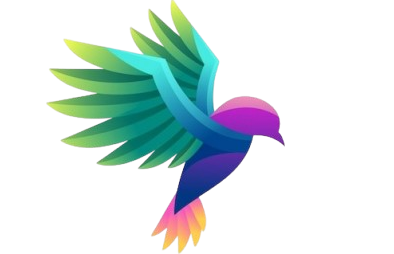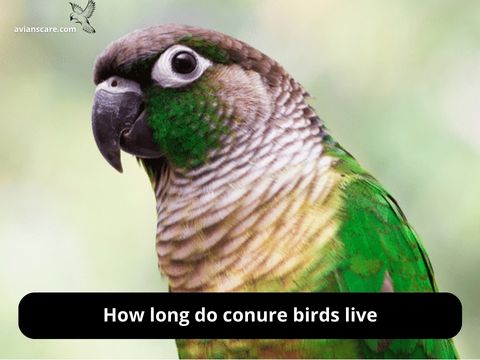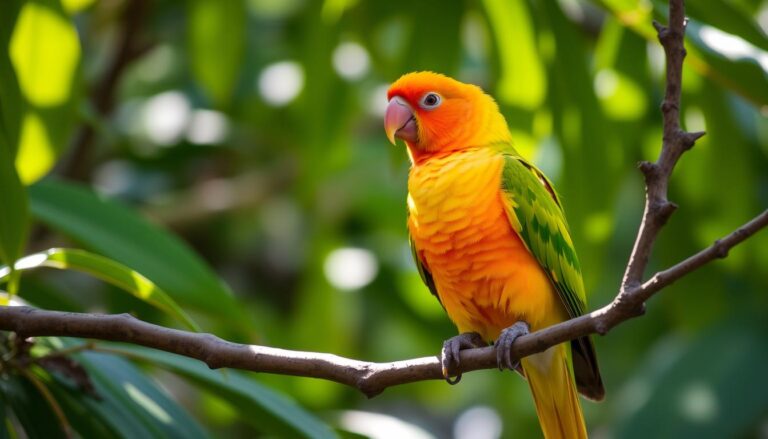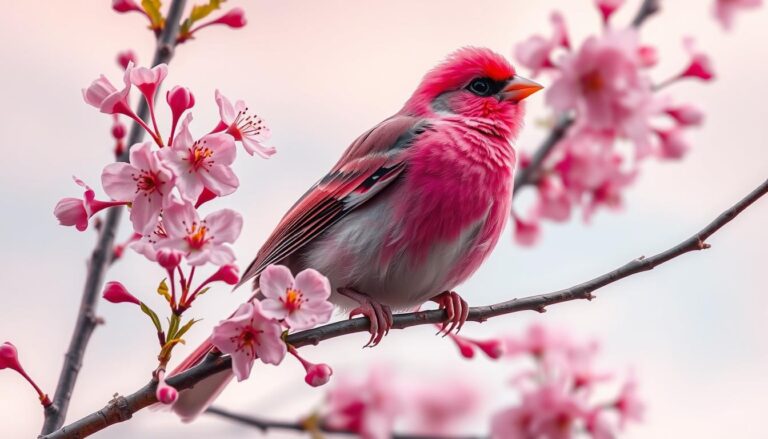Black Palm Cockatoo: Australia’s Majestic Rainforest Bird
The black palm cockatoo soars above Australia’s lush rainforests, a true marvel of nature. It’s the largest parrot in Australia, known for its jet-black feathers, distinctive crest, and size. This bird is not just a sight to see, but it also helps keep the rainforest in balance.
This parrot has a wingspan over 2.5 feet and is 20 inches long. Its strong beak lets it eat tough nuts and seeds, essential for its survival in the rainforest.
Key Takeaways
- The black palm cockatoo is the largest parrot species native to Australia.
- This majestic bird is known for its striking jet-black plumage and impressive size.
- The black palm cockatoo plays a vital role in the delicate balance of its rainforest ecosystems.
- Its powerful beak is adapted to crack open tough nuts and seeds, allowing it to thrive in the challenging rainforest environments.
- The black palm cockatoo’s size and appearance make it a captivating and unique part of Australia’s diverse avian wildlife.
Introduction to the Black Palm Cockatoo
The black palm cockatoo is a majestic bird from Australia’s rainforests. It has striking black feathers and bright red cheek patches. This parrot has won the hearts of many wildlife lovers worldwide.
Origins and Distribution
The black palm cockatoo comes from Australia’s tropical northeast. It thrives in the humid rainforests of Cape York Peninsula and nearby islands. These birds are key to their ecosystem, helping plants and animals alike.
Conservation Status
The black palm cockatoo is vulnerable, according to the International Union for Conservation of Nature (IUCN). Their numbers are falling due to habitat loss, illegal trade, and climate change. These threats harm their homes and survival.
Significance in Australian Wildlife
The black palm cockatoo is more than a beautiful bird. It’s vital to Australia’s rainforest balance. As seed dispersers, they help plants grow and keep the ecosystem healthy.
| Characteristic | Description |
|---|---|
| Scientific Name | Probosciger aterrimus |
| Average Lifespan | 60-80 years |
| Endangered Status | Vulnerable |
| Habitat | Tropical rainforests of northeastern Australia |
| Diet | Primarily seeds, nuts, and fruits |
The black palm cockatoo is a treasure of Australian wildlife. Its beauty and role in nature are crucial. Understanding and protecting this bird is key to its survival.
Physical Characteristics and Appearance
The black palm cockatoo is a stunning bird from the rainforests of northeastern Australia. It has striking black feathers and a unique crest. This bird is quite large, reaching up to 60 centimeters (24 inches) in length.
Its beak is very strong, up to 7 centimeters (2.8 inches) long. This helps it crack open tough nuts and seeds. Its diet mainly consists of these hard foods.
| Characteristic | Measurement |
|---|---|
| Length | 60 cm (24 in) |
| Beak Length | 7 cm (2.8 in) |
| Wingspan | 100 cm (39 in) |
| Weight | 900 g (2 lb) |
The black palm cockatoo is not just big; it looks amazing too. Its sleek black feathers and tall crest make it stand out. Males have a bigger crest and darker feathers than females.
“The black palm cockatoo is a true icon of the Australian rainforest, with its majestic size and captivating appearance.”
This bird’s unique looks and size make it a favorite among bird lovers and nature fans.
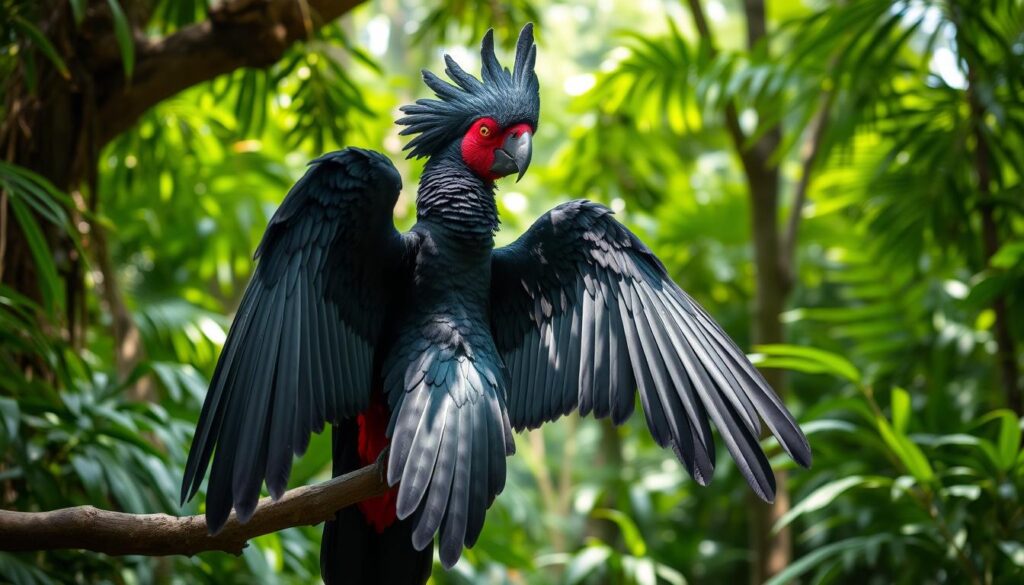
Natural Habitat and Distribution Range
The black palm cockatoo calls the rainforests of northeastern Australia home. It thrives in these lush environments. Its unique adaptations help it live well in its natural habitat.
Preferred Ecosystems
The black palm cockatoo loves tropical and subtropical rainforests. It especially likes areas with lots of palm trees. These green spaces are perfect for nesting, foraging, and growing.
Geographic Locations
The black palm cockatoo is found in northeastern Australia. This includes the Cape York Peninsula and parts of Queensland. These areas have diverse, untouched rainforests, ideal for these birds.
Environmental Requirements
- Abundant rainfall and high humidity levels to maintain the lush, moist rainforest habitat
- Presence of large, hollow trees for nesting and roosting
- Diverse vegetation that provides a variety of food sources, such as nuts, seeds, and fruits
- Relatively undisturbed and protected natural areas to ensure the black palm cockatoo’s survival
The black palm cockatoo’s special needs show why we must protect these rainforests. This is crucial for the survival of this iconic Australian bird.
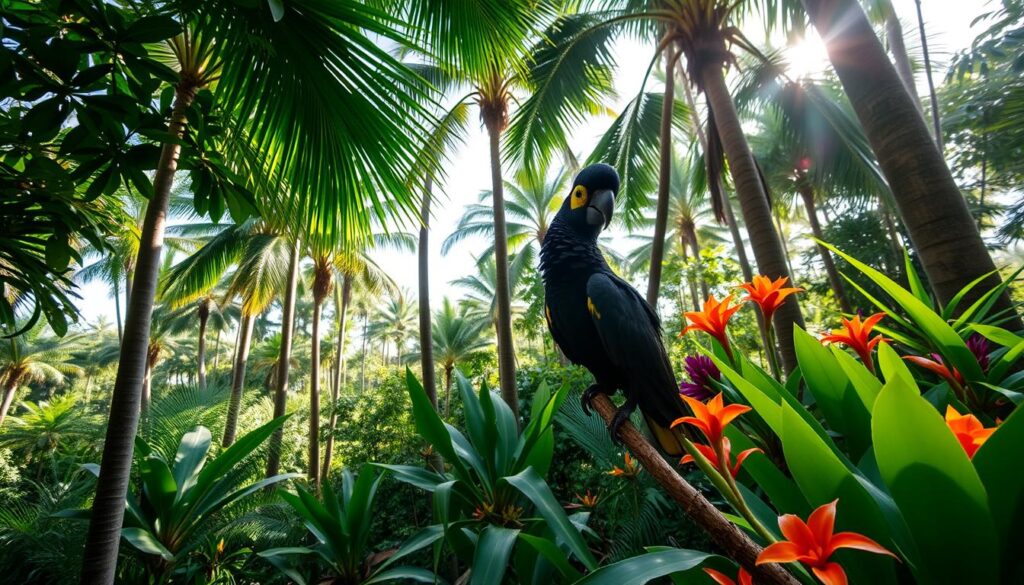
| Ecosystem Preference | Geographic Distribution | Environmental Needs |
|---|---|---|
| Tropical and subtropical rainforests | Northeastern Australia, including Cape York Peninsula and parts of Queensland |
|
Unique Behavioral Traits
The black palm cockatoo is known for its amazing behaviors. These birds are very smart, solving problems and adapting well. They are also special because they use tools, a rare skill in parrots.
They use sticks and other objects to get seeds and insects from tight spots. This shows their cleverness and advanced thinking. They also drum on trees and logs with their strong beaks, creating rhythms.
Black palm cockatoos are very social and talk a lot. They make different sounds to talk to each other. They also play by swinging and tossing things, which helps them grow and connect.
They are very close to their families and work together to find food. This shows how complex their social lives are. Their unique behaviors have made them interesting to scientists and bird lovers.
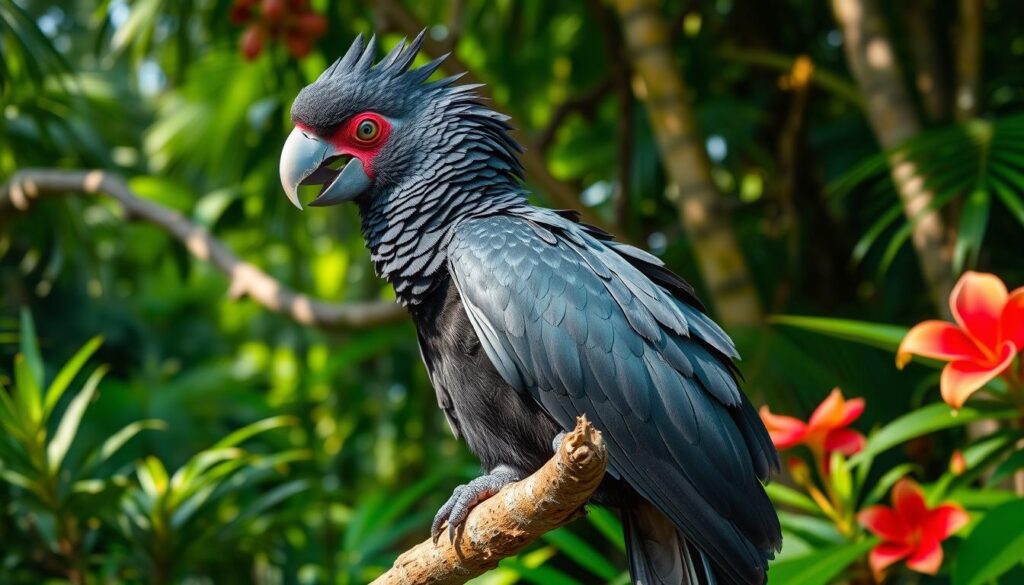
| Behavior | Description |
|---|---|
| Tool Use | Black palm cockatoos use sticks and other objects to extract seeds and insects from hard-to-reach crevices, demonstrating their problem-solving abilities. |
| Drumming | These birds engage in a unique form of drumming, using their strong beaks to create rhythmic patterns on tree trunks and hollow logs. |
| Vocal Communication | Black palm cockatoos are highly vocal, using a variety of calls and contact notes to communicate with flock members. |
| Social Interaction | These birds engage in playful behaviors, such as swinging from branches and tossing objects, which are believed to have social and developmental benefits. |
The black palm cockatoo’s unique behaviors are fascinating. They show us how smart and adaptable these birds are. Their special traits make them stand out in the bird world.
Diet and Feeding Habits in the Wild
The black palm cockatoo is a majestic bird found in Australia’s rainforests. It has unique dietary preferences and feeding patterns. These birds have adapted to thrive in their habitat, using a variety of food sources for nutrition.
Natural Food Sources
The black palm cockatoo mainly eats nuts, seeds, and fruits in the tropical forests. They love the hard-shelled nuts from the black palm tree. They crack these nuts open with their strong beaks to get the kernel inside.
They also look for seeds from the pandanus tree and other native shrubs and trees.
Feeding Patterns
The black palm cockatoo is a skilled forager. It moves through the canopy to find food. They feed in the early morning and late afternoon when it’s cooler and safer.
These birds are social and often feed in groups. They chat and explore the forest together for their next meal.
Nutritional Requirements
The black palm cockatoo eating habits are key to their health and survival. They need a diet rich in protein, fats, and vitamins and minerals. This keeps their vibrant plumage and supports their active lifestyle.
Their specialized beaks and strong gizzards help them break down tough food shells. This ensures they get the most nutritional value from their meals.
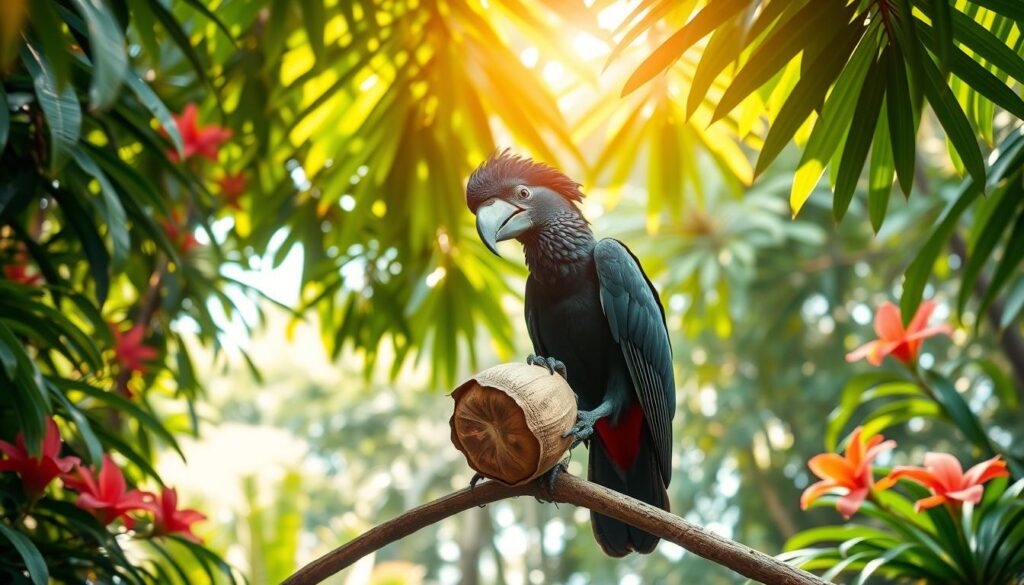
Understanding the black palm cockatoo’s diet and feeding behaviors is vital for conservation. It helps protect this unique species and the Australian rainforest ecosystem. By studying and protecting these birds, we can ensure they thrive in the wild for future generations.
Breeding and Reproduction Cycle
The black palm cockatoo is a stunning bird found in Australia’s rainforests. It has a unique breeding cycle. These birds are known for their black feathers and bright red cheeks. They show off in a beautiful courtship display.
The breeding season starts in late spring or early summer. The birds pair up and stay together for many seasons. Males show off with head-bobbing and wing-flapping to win over females.
After pairing up, the female picks a nesting spot. She builds a nest with bark, leaves, and feathers. She lays 1-2 eggs, which she incubates for about 30 days.
Both parents take turns sitting on the eggs. This keeps them warm and safe. After hatching, they feed and protect their chicks until they can fly on their own.
The black palm cockatoo chicks are born ready for the rainforest. They have soft down and strong beaks. They stay with their parents for months, learning to survive.
Things like habitat loss and poaching threaten these birds. Conservation efforts are key to their survival. This includes restoring habitats and stopping poaching.
The breeding cycle of the black palm cockatoo is fascinating. It shows the beauty and complexity of rainforest life. By learning about these birds, we can help protect them and their habitats for the future.
Conservation Efforts and Challenges
The black palm cockatoo, a majestic species found in Australia’s rainforests, faces big challenges. These birds, known for their black feathers and crest, are getting more attention. Experts and conservation groups are worried about them.
Current Threats
Habitat loss is a big threat to the black palm cockatoo. As natural resources and development grow, their homes are being destroyed. Poaching for pets and climate change also harm them.
Protection Measures
- Efforts to protect their habitat, like setting up protected areas, are happening.
- Stricter laws against illegal poaching are helping.
- Conservation groups are working to spread the word about these birds.
Future Outlook
Despite big challenges, there’s hope for the black palm cockatoo. Conservation efforts, awareness, and good policies might help them thrive. Saving this bird is key to protecting Australia’s nature for the future.
Cultural Significance and Indigenous Connection
The black palm cockatoo, known scientifically as “Probosciger aterrimus,” is deeply important to Indigenous Australian communities. These birds are a big part of their stories, art, and ways of life. They show the strong bond between the birds and the rainforests they live in.
For many Indigenous groups, the black palm cockatoo stands for strength, resilience, and nature’s balance. Its unique call and striking looks have inspired many artworks. From wood carvings to ochre paintings, these works celebrate the bird’s beauty and help keep their culture alive.
Recently, conservation efforts have started to value Indigenous knowledge more. By teaming up with local communities, researchers and policymakers have learned a lot. They now understand the black palm cockatoo’s role in the ecosystem and the dangers it faces. This teamwork has made conservation efforts more effective and has strengthened the connection between the bird and the people who live there.
